
- Another Studio x Gina Tricot
- Re:Make

The collaboration Gina Tricot X Another Studio is a collection that consists of 7 pieces – three shirts, three blazers and one collar. All styles are remakes from existing garments (in this case vintage garments), to which design changes have been made. It has been important to keep it simple, wearable and easy to style with Gina Tricot’s other products. When working with remake in a bigger production like this the design process is different from the conventional way of designing and producing new clothing. The starting point here is the existing garment and the design process is somehow reversed.
Pieces shown in the photos below:
– Cleo Blazer: added boxpleats for a boxy blazer
– Ellison Shirt: two men’s shirts where a cut out in the back has been done and a panel and a tie have been added
– Lennox Blazer: men’s jacket where the lenght of the bodice has been cropped.
– Quincy Collar: collar made from men’s shirts
Second hand material
Gina Tricot and Another Studio

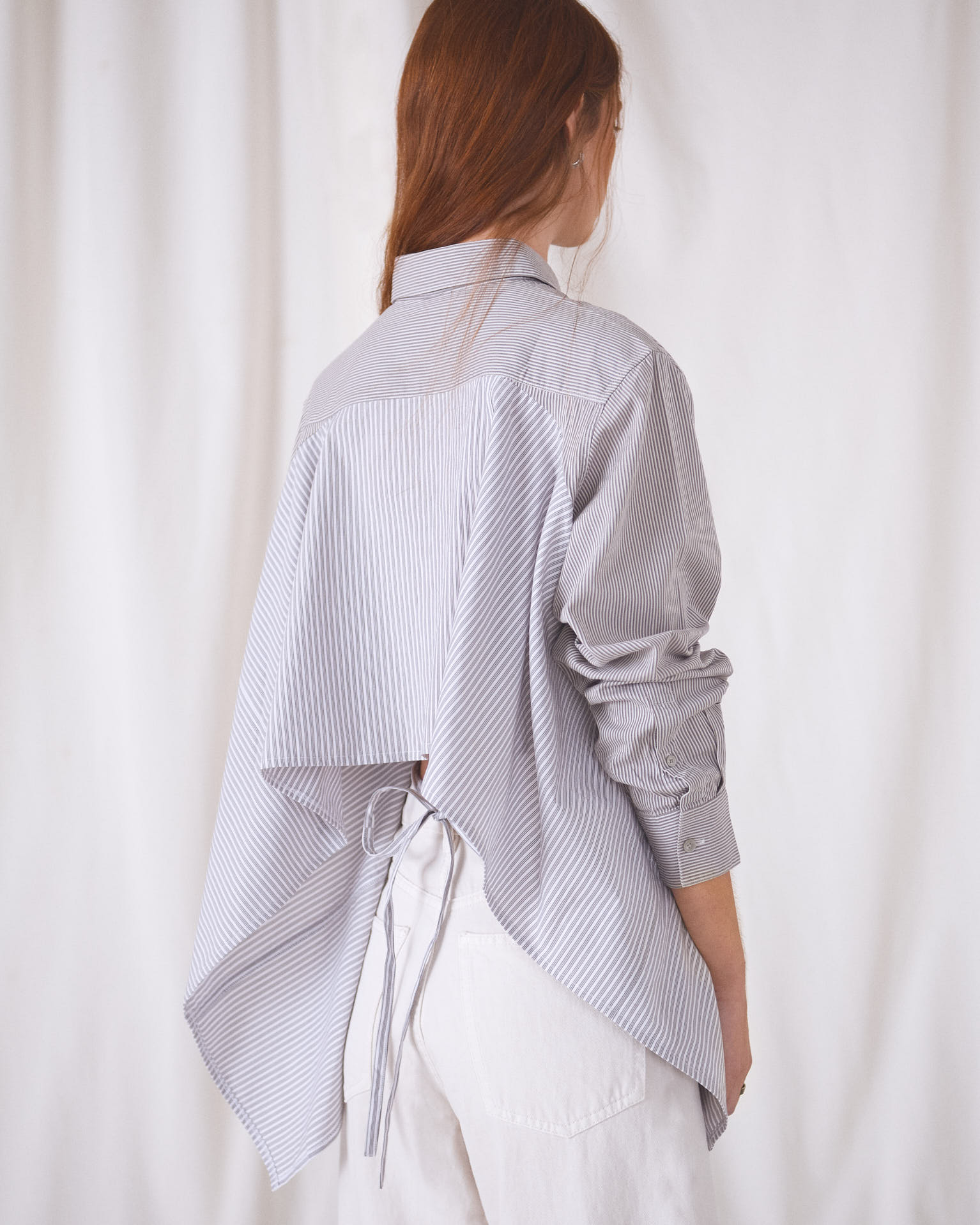
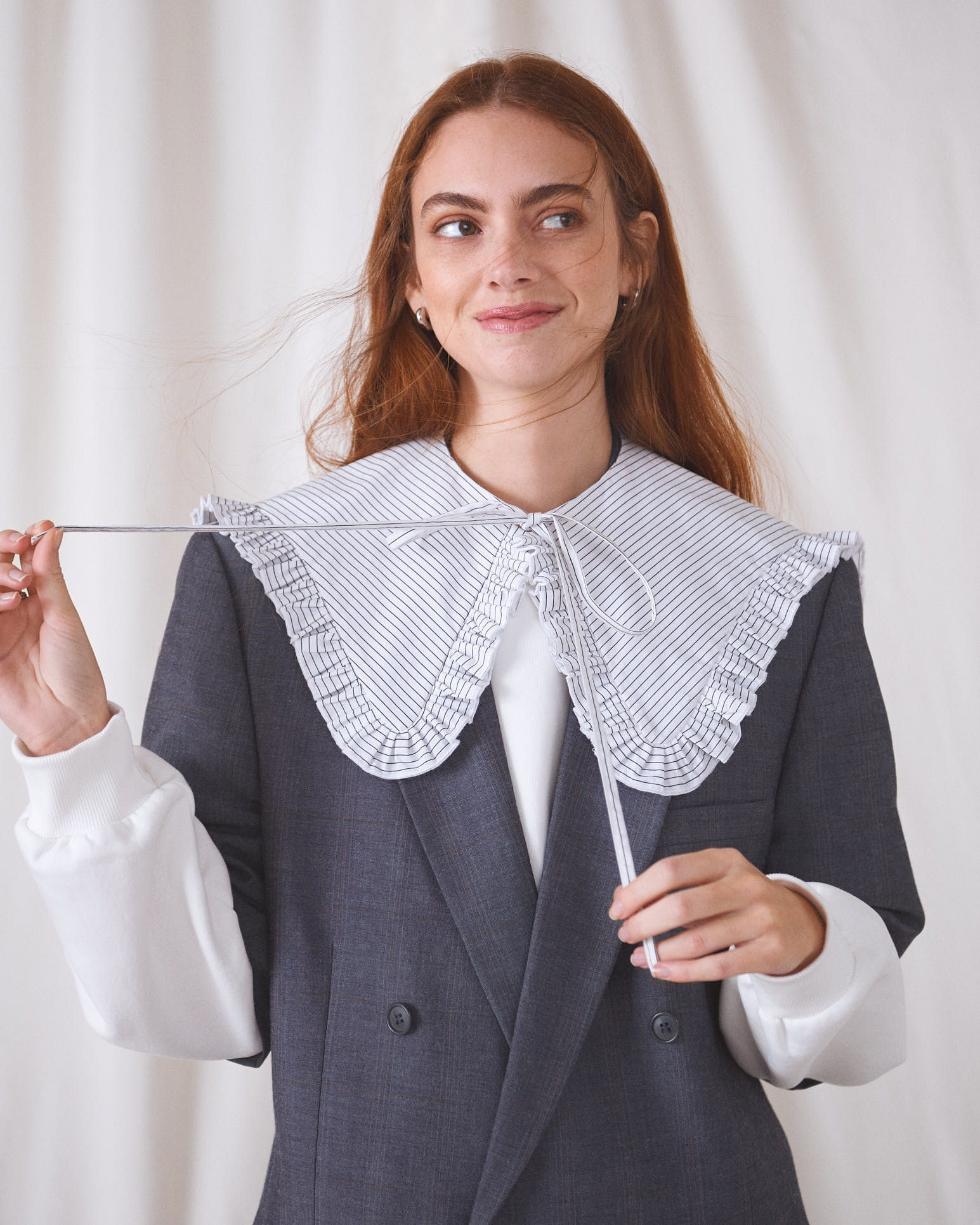


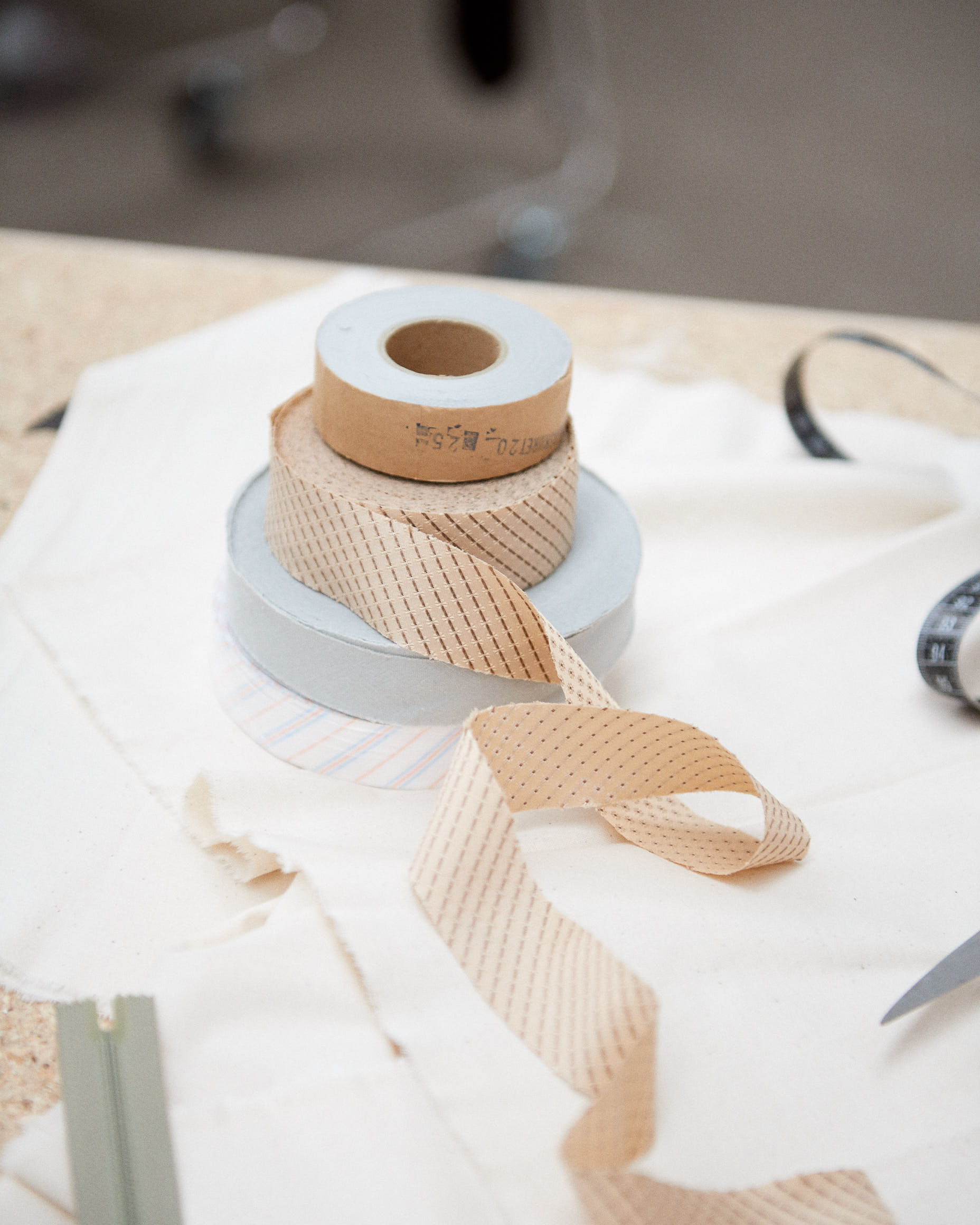
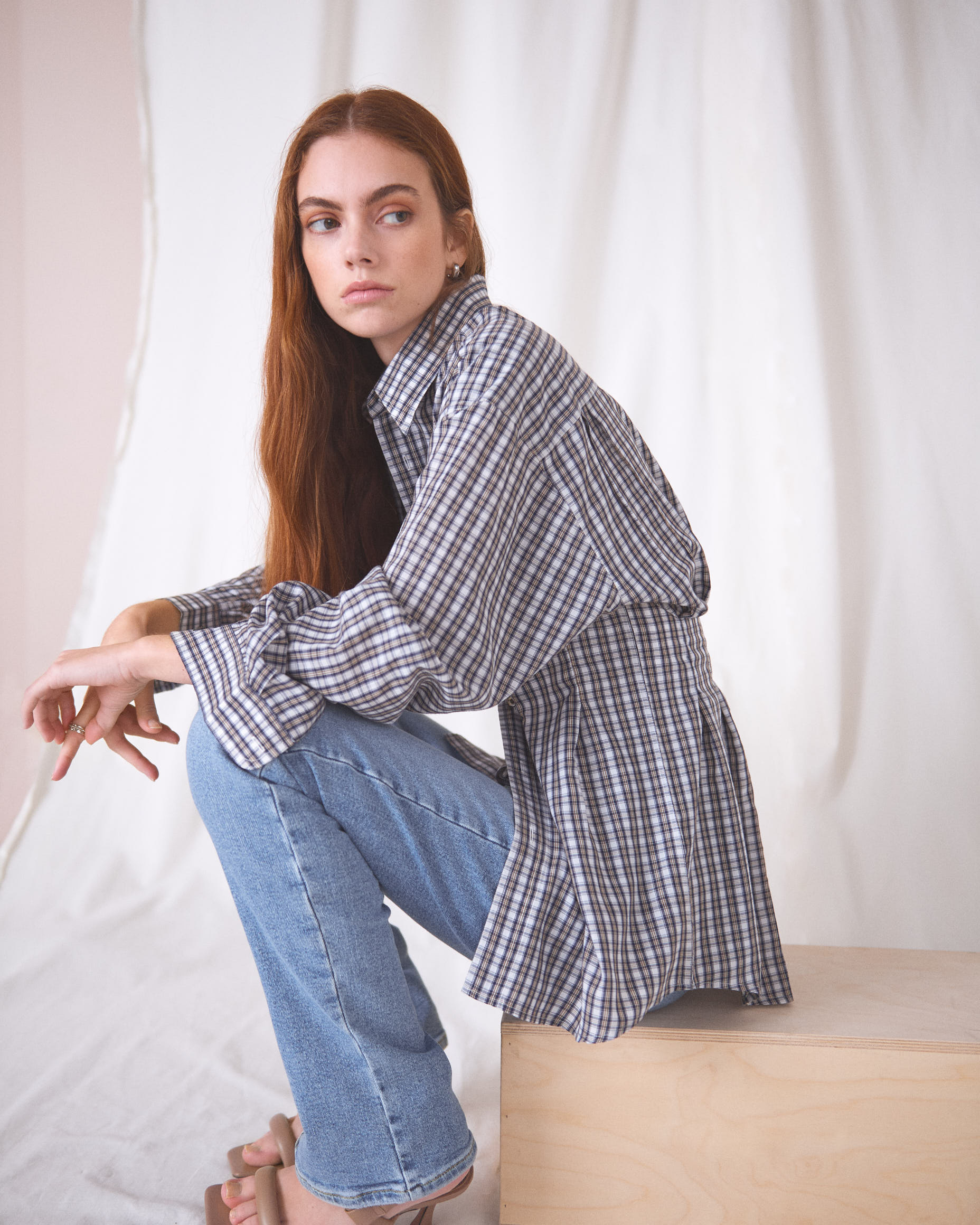


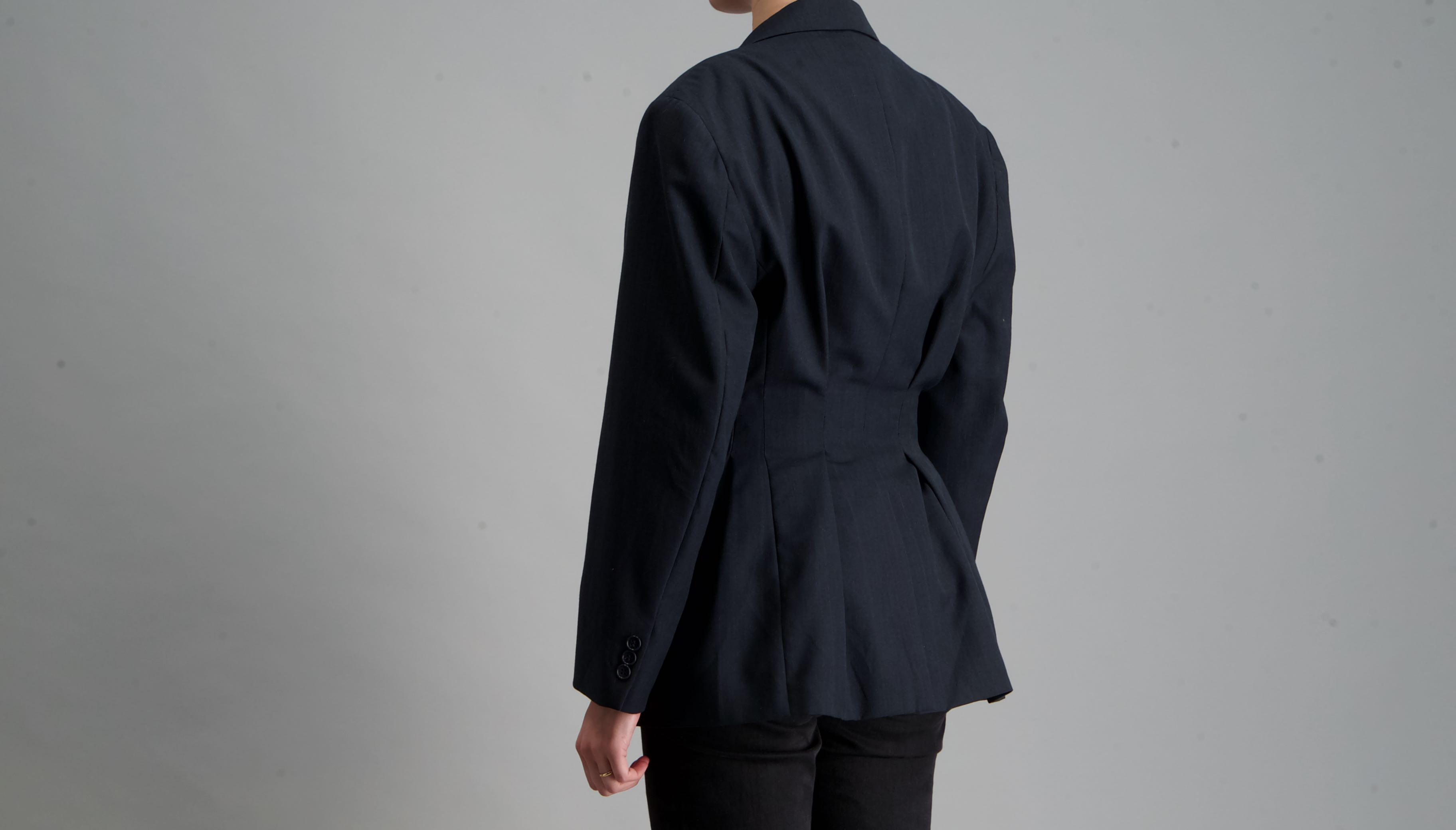




The fashion industry is facing problems with overproduction and leftover clothes. One way of addressing these problems is by being creative with clothes seen as “dead garments”, such as garment returns and samples from product development. Turning men’s styles into women’s styles, changing garment shapes, adding prints and details can bring new life to these garments – making them attractive to consumers again.
One way to make remake an attractive business opportunity for established fashion brands is through microfactories. A small-scale textile production line that include all the necessary steps, from sketch and cutting tables to sewing and even product photography.
The result could be a mini collection of remade garments, up to date and in line with the demands of today’s customers. Ready to be sold in the online store in less than a week.
All group objects:
Each decision during product development affects sustainability and circularity. To develop products with lower environmental impact, the design team needs to be well aware of each component and process, and their individual and combined effect on the final product and its longevity.
One challenge is having comprehensive knowledge regarding sutainability when it comes to all of the components and processes that are a part of the production and lifetime of the garment. An additional challenge is implementing alternative design methods that do not require virgin components. Ongoing research inspires and shows methods to re-make existing products to have new functionalities and designs with an upgraded look.
With higher traceability when it comes to materials, components, and processes, there are increased possibilities for more conscious decisions. If communicated well, this gives the consumer a better basis for decisions.